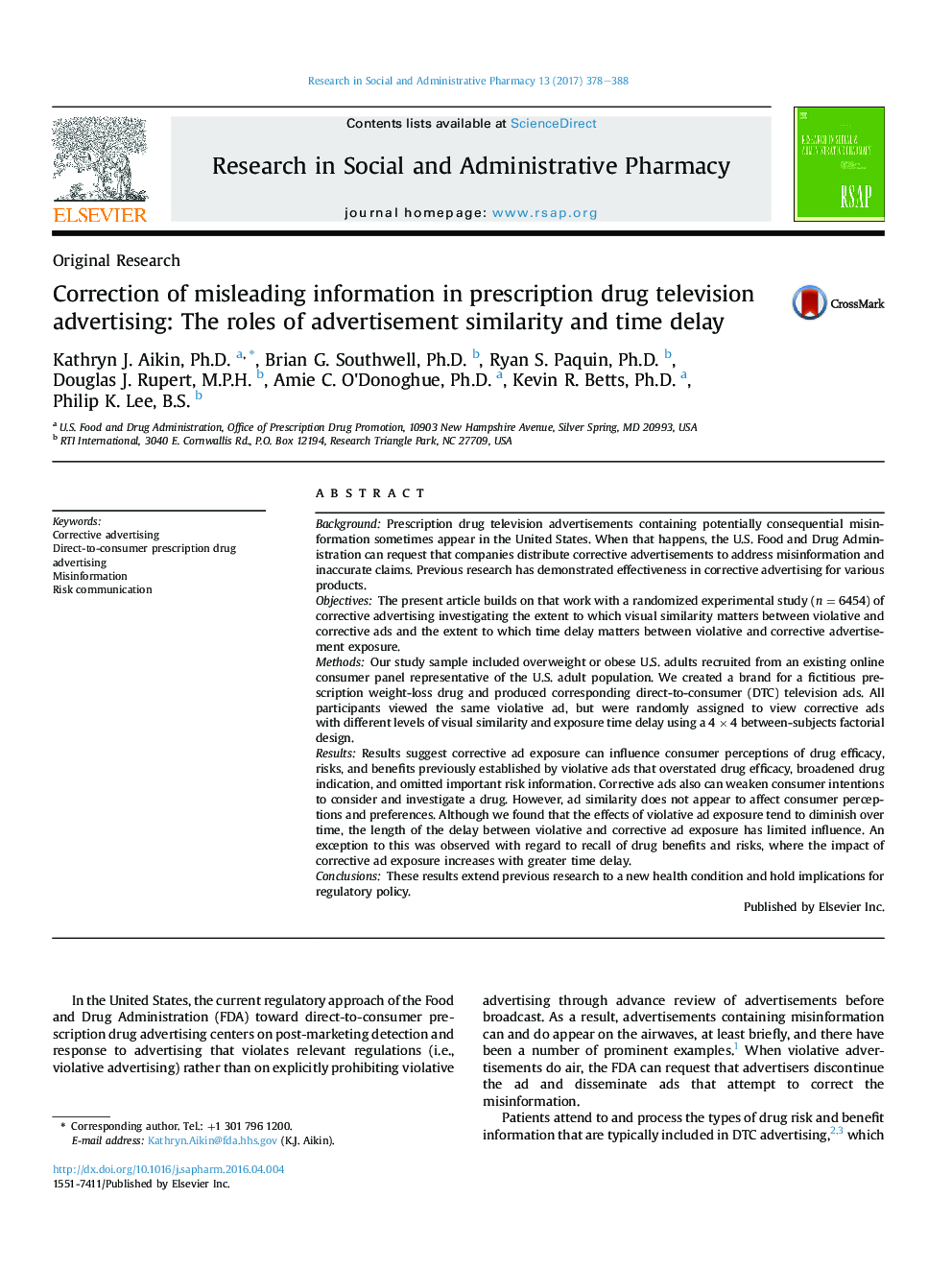| Article ID | Journal | Published Year | Pages | File Type |
|---|---|---|---|---|
| 5551200 | Research in Social and Administrative Pharmacy | 2017 | 11 Pages |
BackgroundPrescription drug television advertisements containing potentially consequential misinformation sometimes appear in the United States. When that happens, the U.S. Food and Drug Administration can request that companies distribute corrective advertisements to address misinformation and inaccurate claims. Previous research has demonstrated effectiveness in corrective advertising for various products.ObjectivesThe present article builds on that work with a randomized experimental study (n = 6454) of corrective advertising investigating the extent to which visual similarity matters between violative and corrective ads and the extent to which time delay matters between violative and corrective advertisement exposure.MethodsOur study sample included overweight or obese U.S. adults recruited from an existing online consumer panel representative of the U.S. adult population. We created a brand for a fictitious prescription weight-loss drug and produced corresponding direct-to-consumer (DTC) television ads. All participants viewed the same violative ad, but were randomly assigned to view corrective ads with different levels of visual similarity and exposure time delay using a 4 Ã 4 between-subjects factorial design.ResultsResults suggest corrective ad exposure can influence consumer perceptions of drug efficacy, risks, and benefits previously established by violative ads that overstated drug efficacy, broadened drug indication, and omitted important risk information. Corrective ads also can weaken consumer intentions to consider and investigate a drug. However, ad similarity does not appear to affect consumer perceptions and preferences. Although we found that the effects of violative ad exposure tend to diminish over time, the length of the delay between violative and corrective ad exposure has limited influence. An exception to this was observed with regard to recall of drug benefits and risks, where the impact of corrective ad exposure increases with greater time delay.ConclusionsThese results extend previous research to a new health condition and hold implications for regulatory policy.
